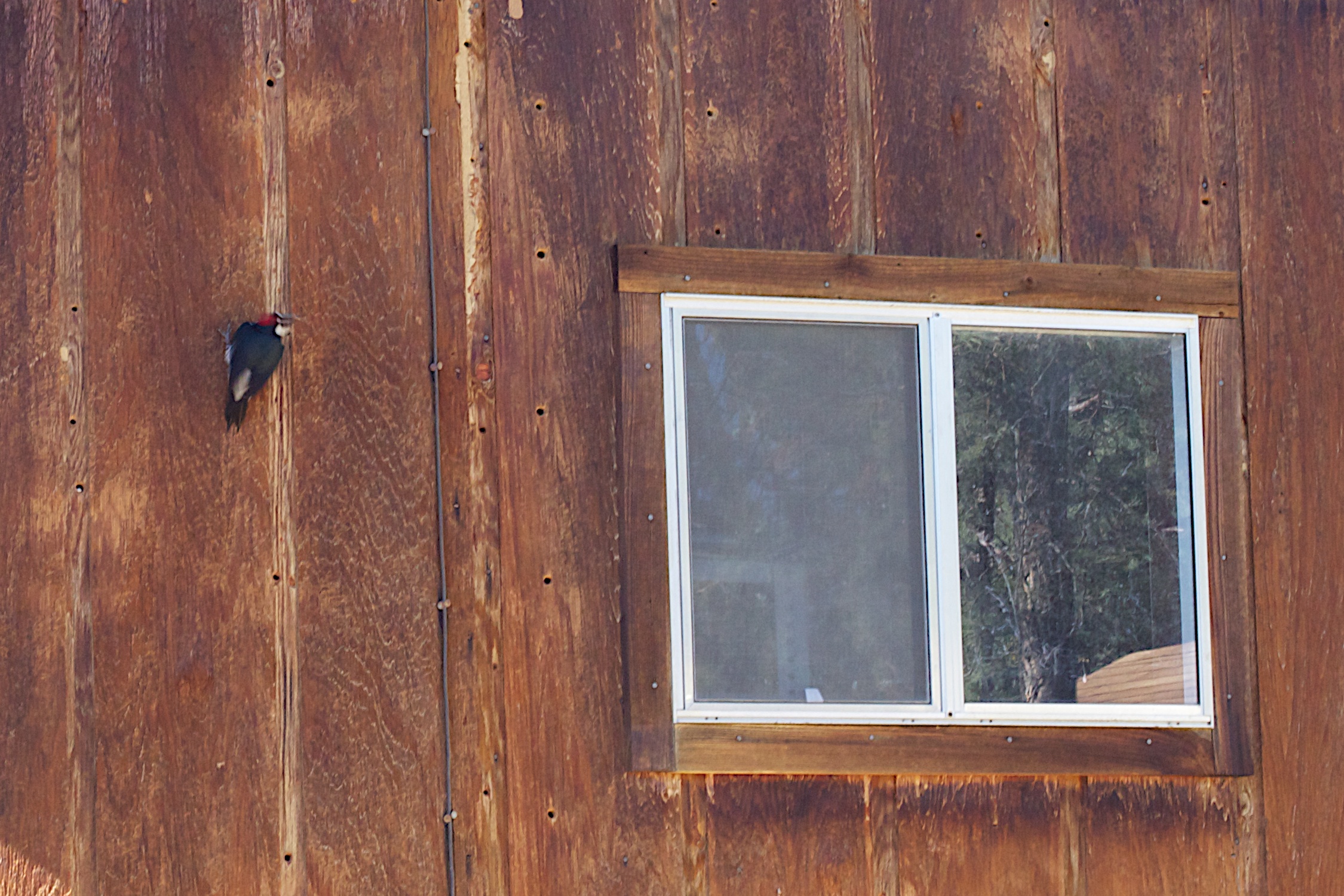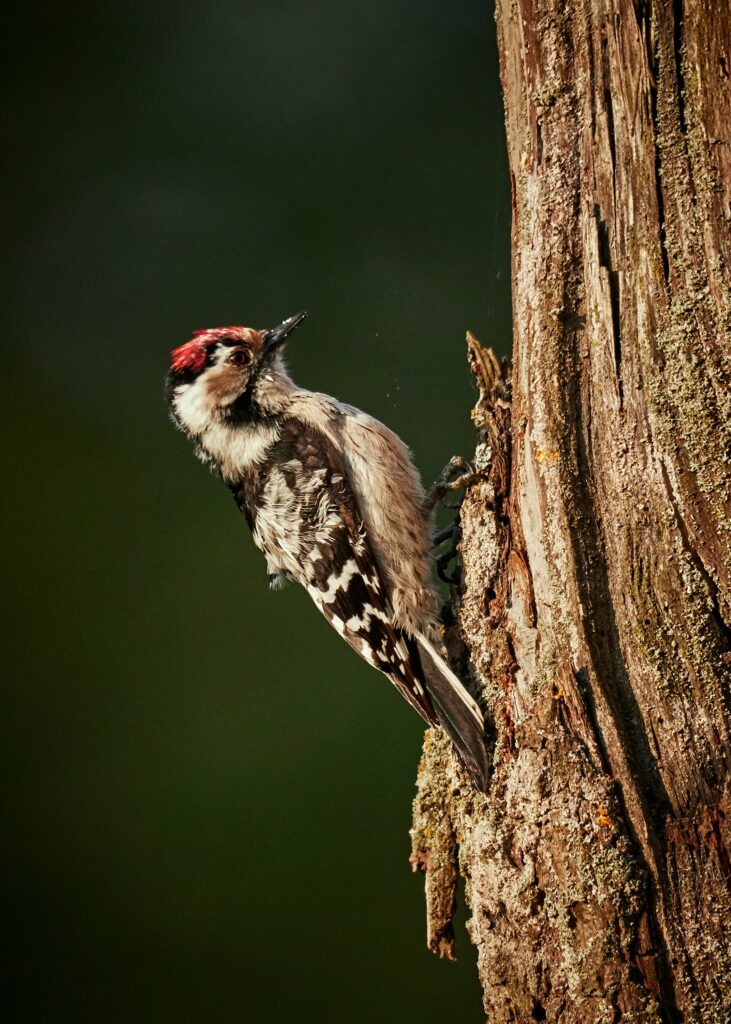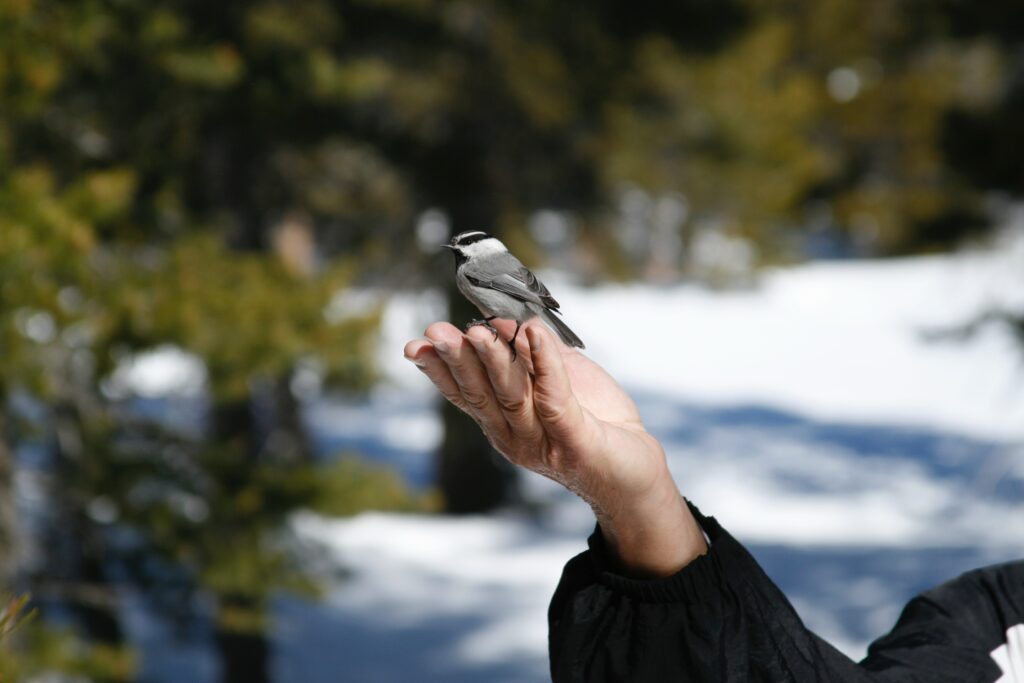If you’ve ever been woken up by a loud, hammering sound on the side of your house, you know what we’re talking about. Birds pecking loudly on your house siding, roof, chimney, gutters, and windows is not only annoying, but it can cause a ton of damage. Read on to see how you can stop these uninvited house guests from coming back to wreak havoc on your home.
Which Birds Peck on Houses?
Often, it’s woodpeckers. However, that annoying tapping you hear can also be nuthatches, chickadees, and other cavity nesting birds. What you’re hearing is them attempting to carve out a little nook for themselves to live in.
Why Do Birds Peck on Houses?
There are a few answers to this, and some of them depend on the time of year. For example, if woodpeckers are pecking on your house in the spring or summer, it’s likely that they’re “drumming” to mark their territory or attract mates. Conversely, they may also be “drilling” to create a nesting hole for breeding season. (Acorn Woodpeckers also peck holes to create crevices for nut storage.)
If the problem is occurring in late summer or fall, it could be the birds are drilling your house looking for insects to eat. Come winter, and woodpeckers and other cavity-nesting birds are looking for places to nest and to hunker down for the cold season. In this case, carving a roosting hole in the side of your home is as good a plan as any.
Woodpecker or machine gun? You be the judge….
How to Stop Birds Pecking on Your House
The good news is that there are a variety of proven deterrents for drumming and drilling birds, all of them bird safe.
(If you’re here on this blog, you’re likely already a bird and nature lover. But, just as a friendly reminder: woodpeckers are protected under the US Migratory Bird Treaty Act, so it’s illegal to harm or kill them.)
Hang a suet feeder
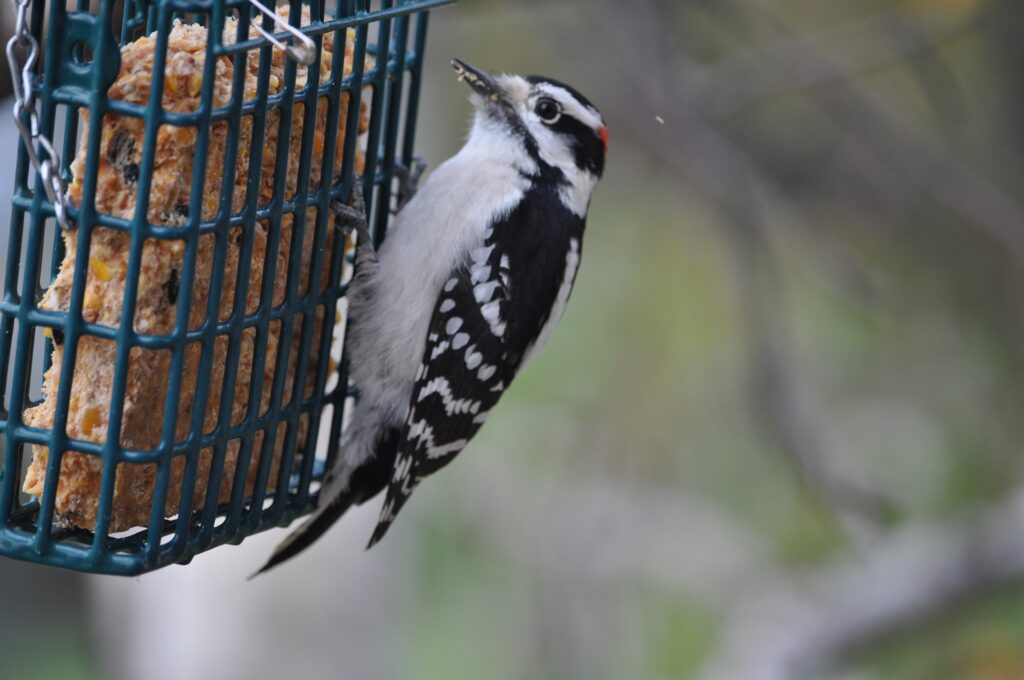
It may seem counterintuitive—I mean you’re trying to keep birds away from your house, right??—but a suet feeder can act as a distraction for pecking birds. Woodpeckers, nuthatches, and chickadees love suet, and it can be a tempting distraction from drumming and drilling. Hang one or more suet feeders in an area away from your house (like in a large tree on your property) and watch them flock there instead. You can also start by hanging the suet feeder near the pecking spot, gradually moving the feeder farther away from your house to another location.
Install a bird house
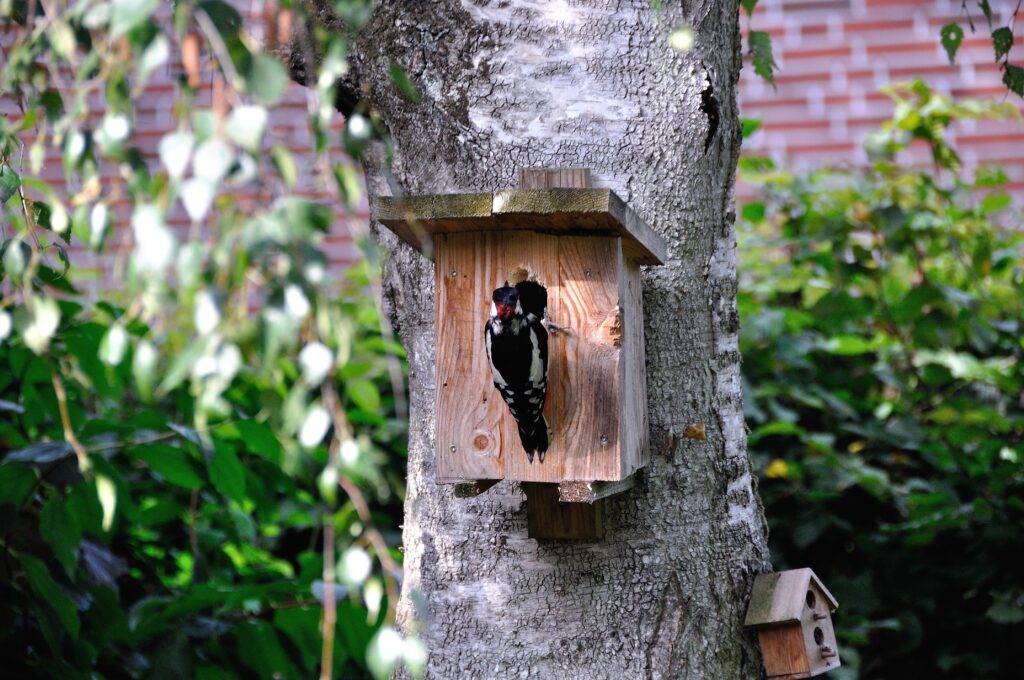
After all, one of the main reasons for pecking is because a bird is looking for a place to roost or nest—so why not give them a better alternative. Mount a bird house on your house or on a nearby tree trunk, and as near to the pecking spot as possible. It should be mounted high enough from the ground to deter predators. Choose a bird house that is sized for woodpeckers and other cavity nesters.
For a handy guide to bird house sizes, see Features of a Good Birdhouse by NestWatch, a program designed by the Cornell Lab of Ornithology.
Use scare tape
In one study, conducted by the Cornell Lab of Ornithology, scare tape was found as the most effective woodpecker deterrent. The reflective nature of the tape is what scares them off. Cut the tape into long sections and hang it in the area where you’re having the pecking problem. You can hang it on your home or shed, or nearby trees and bushes. Scare tape is effective both day and night, as it reflects light from the sun and the moon.
Use window decals
If you find birds pecking at your windows, a window decal will often stop them in their tracks. Often, a bird will peck at its own reflection as a territorial move to scare their “rival” (which they don’t realize is themselves). To prevent pecking, and prevent window strikes that can harm and even kill birds, invest in a decorative window decal, like this cute butterflies.
Use a fake owl
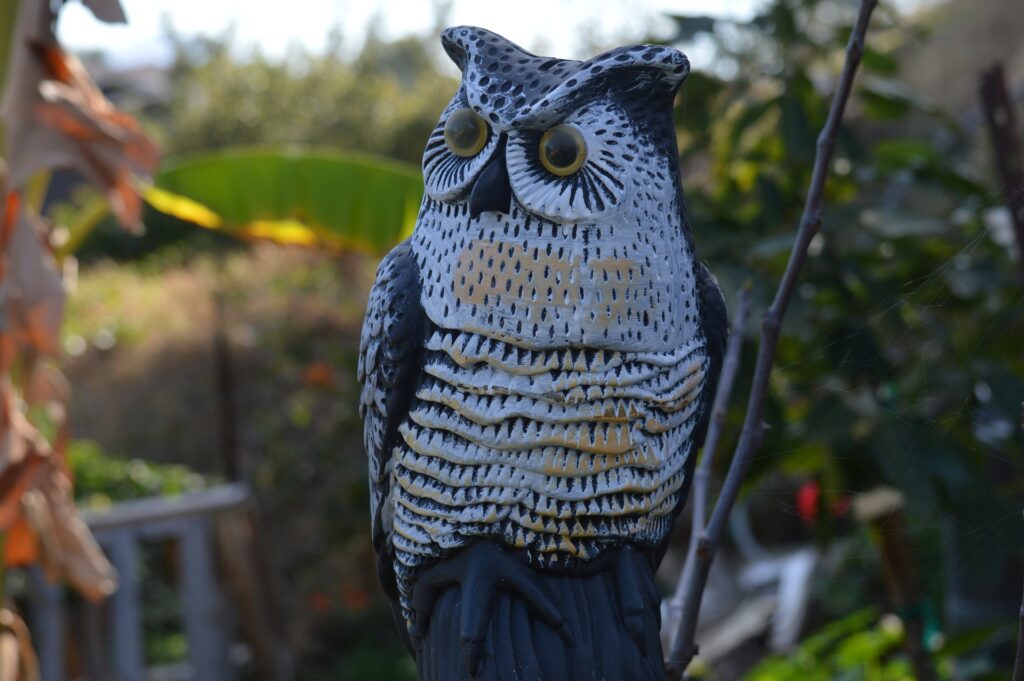
As a woodpecker’s natural predator, an owl can be a huge deterrent to your pecking problem. Place a life-sized fake owl—preferably one with a head that moves in the wind—near your home to keep woodpeckers away.
Cover the affected area
Many people opt to simply cover the affected area with bird netting, chicken wire, burlap, and other coverings. If the bird can’t get access to the area, they won’t be able to peck it. Bear in mind that you’ll need to keep the cover in place for weeks—or even months—at a time for it to be effective, so if you don’t like that look, you may want to choose another option.
Call an exterminator
Not for the birds, but for the insects that attract them. As mentioned, one reason a bird is pecking on your house is to feed on the insects that live in the siding. Beetles, ants, caterpillars, termites—all are tasty morsels to woodpeckers and insect-eating birds.
And Now for a Sound You’ll Want to Hear!

Now that you’ve got that pecking racket under control, it’s time to fill your ears with the pleasant sounds of our “Singing for the Birds” series. Listen to bird-themed songs from our very own talented singers at the Chirp Nature Center. Check out our past performances here, and stay tuned for more!

